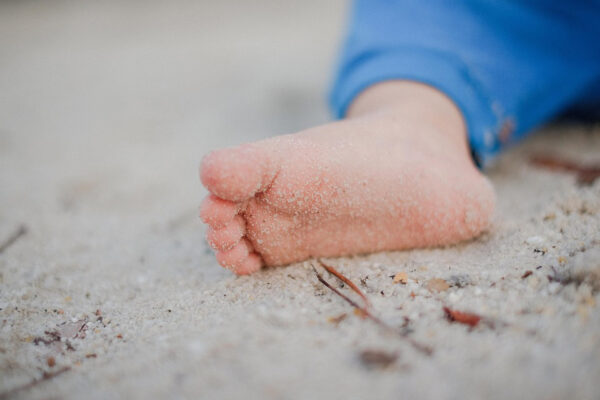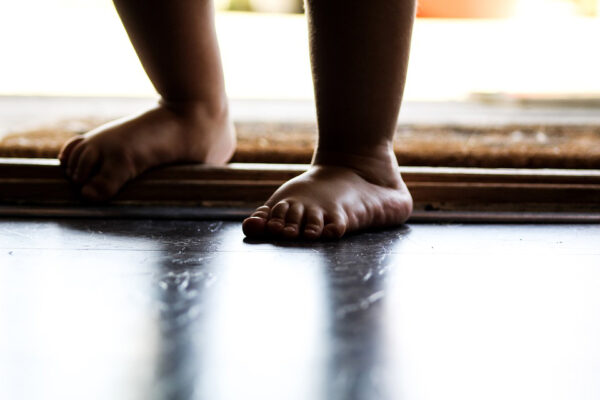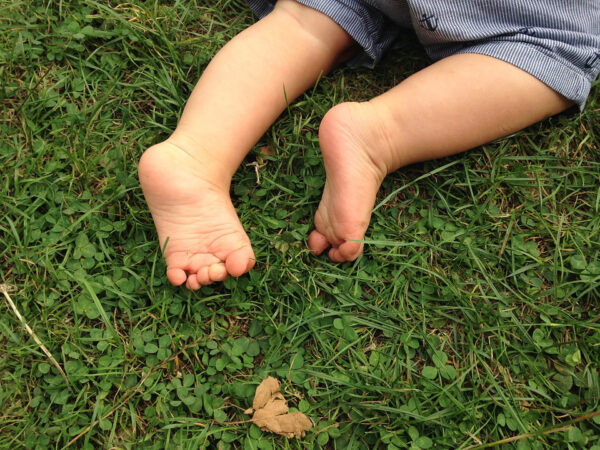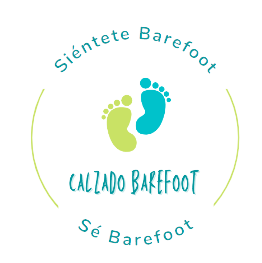Respectful Baby Shoes and First Steps.
Published by Ana on
RESPECTFUL BABY SHOES AND FIRST STEPS.
Crawling or walking are maturation processes, and there’s little point in trying to speed them up. Except in isolated cases, we have no reason to doubt that the child will walk on their own without the help of any shoe.
If we use shoes with reinforcements to support the body’s weight, we are limiting the development of the muscles of babies’ feet and ankles. Do we put wristbands on them when they start crawling? Just as we leave their wrists free to crawl, we should leave their feet bare whenever possible.
Barefoot or respectful shoes are ideal for babies and children in their early stages of development, as they allow for natural foot movement, promoting greater stability, strength, and flexibility in the muscles of the feet and ankles.
Studies indicate that optimal foot development occurs in a barefoot environment, and the sole function of shoes should be to protect the foot from injuries and infections. Rigid and compressive footwear can cause deformity, weakness, and loss of mobility. Therefore, it’s important to choose footwear that closely resembles being barefoot, so children can optimally develop their cognitive and motor skills, such as proprioception and balance. Moreover, studies have also shown that prolonged use of conventional footwear in children aged 3 to 8 can alter foot morphology and gait type, making it essential to opt for barefoot shoes and go barefoot whenever possible.
FOOTWEAR FOR BABIES AND CHILDREN
The Pediatrics journal, over 20 years ago, published a review pointing out that optimal foot development occurs in a barefoot environment. It also states:
That the sole function of shoes should be to protect the foot from injuries and infections.
- Rigid and compressive footwear can cause deformity, weakness, and loss of mobility.
- Shoe selection for children should be based on the barefoot model (respectful shoes or barefoot footwear).
- There are indications that prolonged use of conventional footwear in children aged 3-8 alters foot morphology and gait type.
- In older children, regular shoe use reduces the foot arch angle, potentially leading to future knee or ankle problems.

LET YOUR BABY GO BAREFOOT!
Babies don’t have a formed arch, but its proper formation depends on allowing their feet to develop freely. Moreover, babies who often go barefoot develop better cognitive abilities.
According to the study by podiatrist Isabel Gentil, the first 18 months of a baby’s life are crucial. During this stage, the most significant neurological changes occur, as the child’s central nervous system is highly plastic.
The feet of newborn babies have a high tactile sensitivity to external stimuli, much more than their hands. To start walking, the child needs the information received from the foot’s sole (proprioception) and from the joints to coordinate movements and achieve balance.
By putting their feet in contact with irregular surfaces, with different pressures and textures, they develop proprioception. They also improve joint positioning and strengthen foot muscles.
We won’t be able to prevent our children from wearing shoes. But when that happens, we should use respectful footwear that closely simulates the conditions of being barefoot.

WHAT IS THE IDEAL SHOE FOR THE FIRST STEPS?
Well… none! Most likely, their first steps will be taken at home or in a controlled environment, so it’s a great opportunity to let their feet be free, and if it’s cold, they can always wear socks.
When the baby needs to wear shoes to go outside, they should follow the barefoot footwear philosophy and always use respectful or minimalist shoes that meet the following characteristics:
- Respectful shoe with a non-slip sole thick enough to protect from potential hazards, but thin enough to perceive ground irregularities.
- The shoe should be lightweight and not interfere with the baby’s natural foot and ankle mobility.
- The front part for the toes should be wide, so it doesn’t compress them.
- Respectful shoe without drop (heel part higher than the toe) to prevent shortening of the posterior muscles.
- Inner insole without any anatomical elements.

IN SUMMARY
During the first 18 months of life, children’s brains are more plastic. Through their feet, they receive many stimuli that promote intelligence development. Let them be free as much as possible to make the most of their cognitive abilities.
When you have to put shoes on your baby during their first steps, choose a respectful shoe so they continue to perceive environmental stimuli and strengthen the muscles of the feet and ankles.




